“This city is nothing more than a manger scene that they keep up all year long. An immense living manger scene, teeming with love affairs, hunger, hatred, and resentments, a city that shields itself from the cold and the heat as best it can as it ponders what it can do to better its terrible condition. A manger scene where the shepherds are ruthless and capable of anything.”—Commissario Luigi Alfredo Ricciardi.
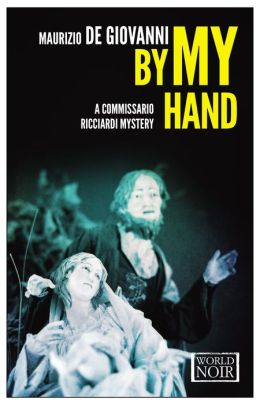 The ninth year of the Fascist Era, 1931, is almost over, and the residents of Naples, at least those who have managed to keep food on the table, are getting ready for Christmas. Within this setting Maurizio de Giovanni develops his fifth novel in which Commissario Ricciardi is challenged by a terrible murder, the slashing and stabbing deaths of a husband and wife from a wealthy family. The husband Emanuele Garofalo is a rising star as a Centurion in a fascist-inspired seaport militia, which governs the port, its boats, its fishermen, and all the fish being brought in to market. The possibilities for corruption and graft are enormous, and Garofalo, who acquired his position by making false claims against his boss, is up to his neck in criminal activities. The bodies of the couple are found when the zampognari, two young men who help celebrate the season by playing the Neapolitan bagpipe, come to the Garofalos’ house to play for them in the lead-up to Christmas. Terrified, the young men immediately call the police, and Commissario Ricciardi and Brigadier Maione dutifully appear.
The ninth year of the Fascist Era, 1931, is almost over, and the residents of Naples, at least those who have managed to keep food on the table, are getting ready for Christmas. Within this setting Maurizio de Giovanni develops his fifth novel in which Commissario Ricciardi is challenged by a terrible murder, the slashing and stabbing deaths of a husband and wife from a wealthy family. The husband Emanuele Garofalo is a rising star as a Centurion in a fascist-inspired seaport militia, which governs the port, its boats, its fishermen, and all the fish being brought in to market. The possibilities for corruption and graft are enormous, and Garofalo, who acquired his position by making false claims against his boss, is up to his neck in criminal activities. The bodies of the couple are found when the zampognari, two young men who help celebrate the season by playing the Neapolitan bagpipe, come to the Garofalos’ house to play for them in the lead-up to Christmas. Terrified, the young men immediately call the police, and Commissario Ricciardi and Brigadier Maione dutifully appear.
This novel opens two months after the previous novel, The Day of the Dead, in which Ricciardi was nearly killed in an automobile accident. The author continues the characters and on-going subplots well familiar to those who have read the earlier books, and though he does fill in some of the background for new readers, the series really benefits by being read in order. Ricciardi, whose aristocratic family died when he was a child, lives with his elderly Tata Rosa, and shares a family trait with his mother, who “died a raving lunatic,” something that makes him now regard himself a “condemned man.” Ricciardi sees “on every street corner, the dead who have died a violent death,” and whenever he arrives at a murder scene, he hears “the last obtuse thought of their broken lives.” He feels the victims’ pain so strongly that he believes that it would be wrong for him to fall in love for fear of condemning a wife to “share the existence of a man who walks among the dead.” Two women from past novels, Livia, the aggressive and playful widow of the world’s greatest tenor, and Enrica, the shy young woman who lives across the way from Ricciardi, are both interested in him and continue the competition for his attentions here. His only real friend is the sympathetic Brigadier Maione, in his fifties and the father of five, his oldest son Luca having been killed three years ago when the boy was a rookie police officer.
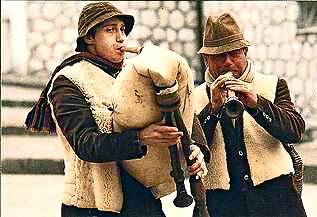
The zampognari, Neapolitan bagpipers, help to celebrate the Christmas season throughout the city. Two of them discover the Garofolos’ bodies.
A series of developing mysteries make this the most complex novel of the series so far, and its vibrant setting at Christmas, filled with all the traditions, fanfare, and customary foods of the holiday season make it the most colorful. Ominous soliloquies by the murderer (or potential murderers) begin with the opening page, and draw the reader into a sick mind (or minds), while also providing hints that keep the reader constantly looking for clues during the action. The murderer has left one clue at the death scene: The elaborate, hand-carved manger scene which the wicked Garofalo had set up for his young daughter for the holidays is minus St. Joseph, the broken statue having been kicked under a tablecloth nearby. With every image in the nativity scene having symbolic importance, Ricciardi is soon consulting Don Pierino, a young priest, to find out exactly what St. Joseph might have represented to the murderer. Subsequent soliloquies by a variety of woodcarvers of nativity figures, all of whom have the skills and equipment to commit these murders, suggest the number of people who had reason to want Garofalo dead. Since half the men in the city, it seems, are wood carvers, the possibilities seem endless.
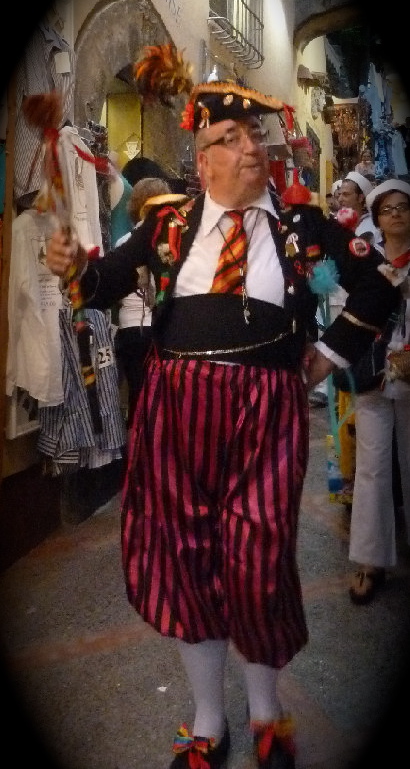
The pazzariello, a kind of town crier, keeps Livia Vezzi, widow of the world’s greatest tenor, up to date on the happenings in her new, adopted city – and on Ricciardi.
As he investigates the Garofalo murders, Ricciardi soon learns that he and Maione, too, are under investigation by the Fascists, and strong suggestions arise that it is not in their best interests to pursue this murder. In another thread, Franco Massa, one of Maione’s friends from childhood, who works in a prison, wants Maione to help him “settle” the issue of Maione’s son Luca’s death. Massa, who never married, has always regarded Luca as a “son,” and he is at least as devastated by Luca’s death as Maione. Recent events at the prison indicate that the person who was punished for Luca’s death might not have been the real killer. Before long, the reader is beginning to think that the plot elements of the novel parallel a juggling act, with nothing that seems true being really true.
The symbolism of St. Sebastian, killed with as many arrows as Garofalo was killed with stab wounds, and who is also the patron saint of the militia, vies for attention with the story of Bambinella, a transvestite who regards Maione as a friend, giving the novel a unique view of the population of Naples in the 1930s. As new questions arise about what revenge, if anything, the kindly Maione will take regarding his son’s murder, the role of the realistic and earthy medical examiner, Dr. Modo, and his feelings for the poor become stronger. Further complications, related to the impoverished fishing industry, compete with the long history of Ricciardi with his Tata Rosa as they consider what he will do to protect her as she gets older and more frail.
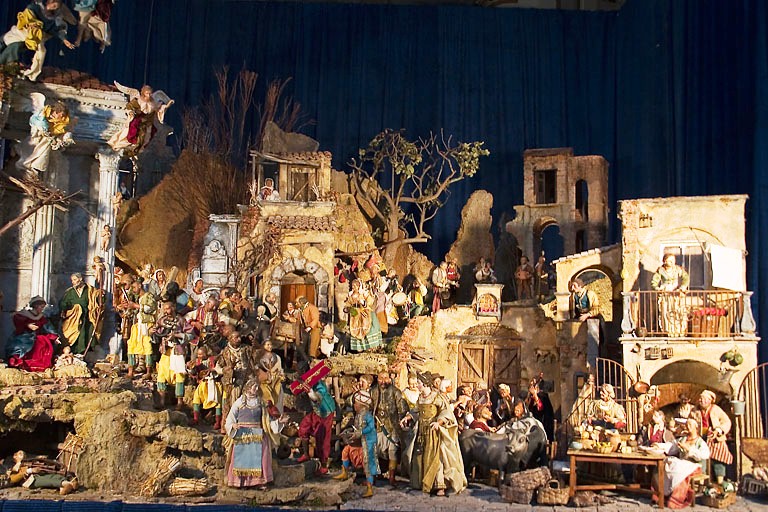
This elaborate nativity scene shows characters beloved in Italy, all with symbolic connotations. Double-click to enlarge.
The interpersonal relationships in Maurizio de Giovanni’s novels set them apart from many other noir mysteries, and in a series like this one, now in its fifth novel, the characters become all-important as the reader comes to successive novels hoping for encouraging resolutions to some of the questions left unanswered in past novels. One unexpected development here is that the fate of the small dog owned by Tette, the little orphan whose death started the whole story in Day of the Dead, is resolved in this novel. Rosa, the elderly servant who has worked for Ricciardi’s family ever since he was an infant also gets an opportunity to be heard here, and Enrica, the sweet and shy girl across the way, who loves Ricciardi from afar, begins to come into her own. Maione and his family come to new and heartwarming understandings about what makes the world keep turning. The novel, as good as it is on the level of an individual mystery, expands here and becomes even better when considered as part of a five-part series.
ALSO by de Giovanni: I WILL HAVE VENGEANCE (#1) BLOOD CURSE (#2), EVERYONE IN THEIR PLACE (#3), DAY OF THE DEAD (#4), VIPER (#6) THE BOTTOM OF YOUR HEART (#7), GLASS SOULS: MOTHS FOR COMMISSARIO RICCIARDI (#8), NAMELESS SERENADE (#9),
Inspector Lojacono series: CROCODILE (#1), THE BASTARDS OF PIZZOFALCONE (#2), DARKNESS FOR THE BASTARDS OF PIZZOFALCONE (#3), COLD FOR THE BASTARDS OF PIZZOFALCONE (#4), PUPPIES (#5)
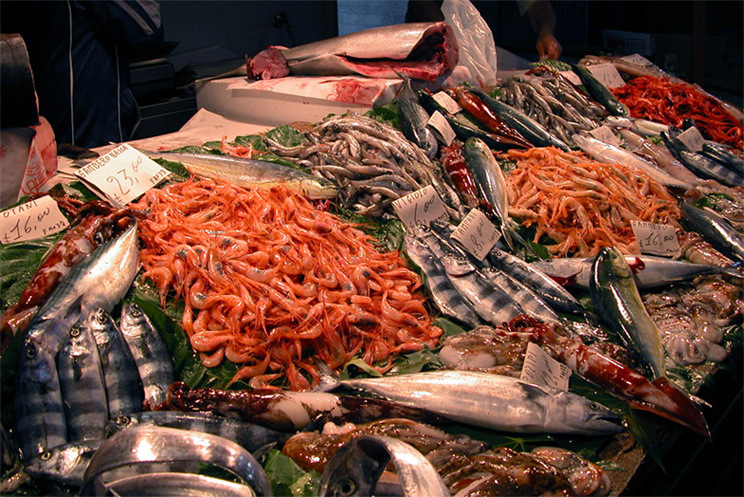
Two days before Christmas, the fish market is at its peak as everyone wants to secure her special favorites for the holiday, and the fishmongers want to secure their biggest profits. Double-click to enlarge, then scroll for luscious Neapolitan recipes.
Photos, in order: The author’s photo appears on http://espresso.repubblica.it/
The zampognari, bagpipers who help Neapolitans to celebrate the holidays, are found on http://rolloverbeethoven.it
The pazzariello, a kind of town crier, is from http://www.fotoeweb.it/
This elaborate Neapolitan manger scene shows characters beloved in Italy. Try to find Mary, Joseph, and the baby Jesus. Double click to enlarge. http://www.lagazzettaitaliana.com/
The variety available in the fish market is seen here: http://jovinacooksitalian.com Double-click to enlarge, then scroll down. The recipes will be hard to resist for many reader-chefs.
ARC: Europa Editions

